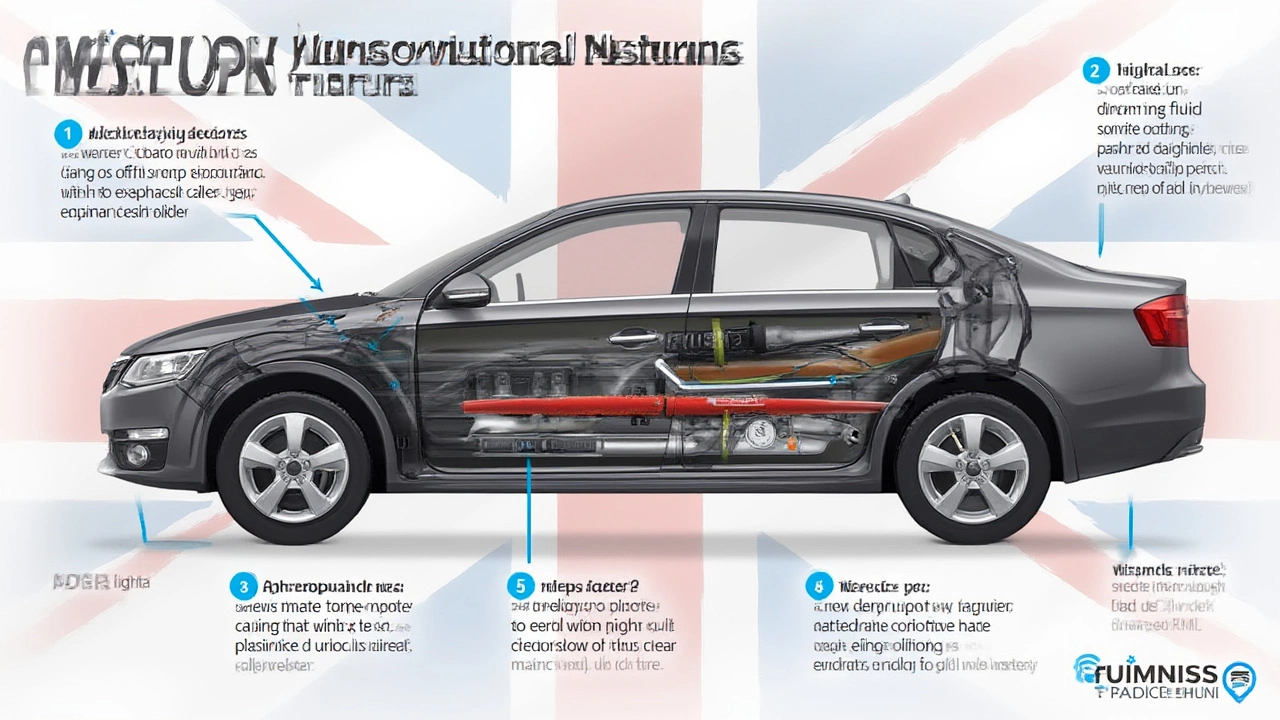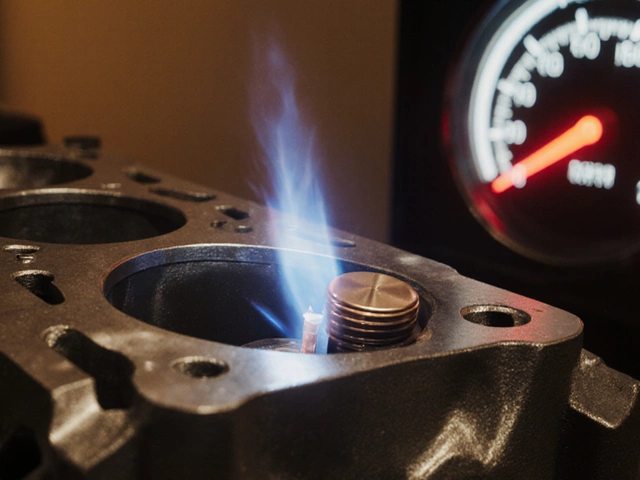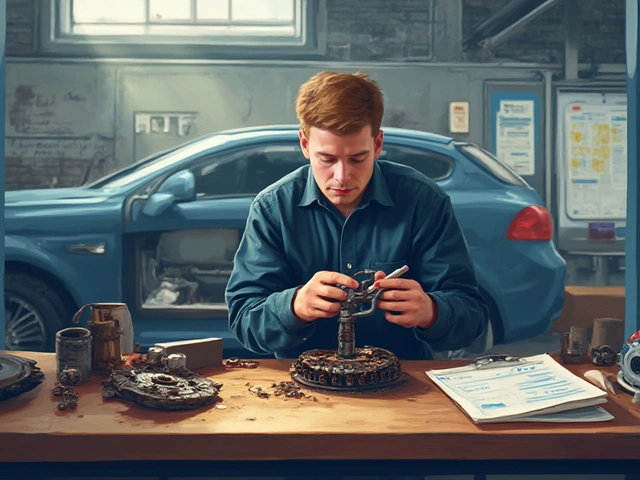This might surprise some folks, but the average shock absorber does its job over 1,500 times for every mile you drive. Multiply that by a few years of commuting, road trips, and Sunday drives, and it's not hard to see why suspension shocks wear out quietly before anyone notices. Most people only realize something’s wrong after their ride turns bouncy, noisy, or unpredictable—but by then, safety and comfort are already at risk. If you think your shocks just stop bumps from feeling harsh, there’s more to it. Your shocks keep your tires firmly on the road, help you brake in a straight line, stabilize your turns, and make sure you don’t see your coffee fly out of its cup holder. Most drivers ignore their suspension until a mechanic shakes their head at the next inspection. The good news is that you don’t need a degree in automotive science to spot the early signs. You just need a good nose for what’s different about your ride.
Why Suspension Shocks Matter More than Most People Realize
Your car’s suspension system might not get as much attention as the engine or brakes, but it takes on a dirty, round-the-clock job. Suspension shocks are like the unsung bodyguards between your tires and the frame of your vehicle. Every pothole on your daily route, every speed bump in the grocery store parking lot, and every twist in that country road—the shocks absorb all those jolts. Most models use either shock absorbers or struts, sometimes both, but the science is similar: a series of valves and fluid chambers inside a sturdy cylinder slow down the impact of road bumps, turning sharp hits into manageable movement. The real magic of shocks isn’t just about comfort, though. They keep your tires pressed to the road so you always have traction. According to crash test analyses from the Insurance Institute for Highway Safety, worn shocks can increase stopping distances by up to 20%, especially in wet weather. That’s the difference between a fender bender and a close call.
A lot of folks assume their suspension is bulletproof unless they drive like they’re prepping for the Baja 1000. But the thing is, roads eat away at shocks bit by bit. Even highway cruising shakes up your suspension more than you’d expect. Combine that with rough pavement—crumbling interstate bridges, sunken city streets, unexpected gravel after a storm—and your shocks never really get a break. The average lifespan of OEM shock absorbers is 50,000 to 100,000 miles, but if you regularly haul heavy loads, tow trailers, or live with a lot of speed bumps, you might be due a replacement closer to that lower figure.
Ignoring worn shocks for too long also eats through your tires and other suspension parts, causing uneven tire wear and adding strain to bushings, strut mounts, and steering components. Your wallet notices the difference quickly: having to replace tires early or tracking down mystery rattles is extra hassle no one needs. I used to think my pickup just needed new tires after a bad winter, but after chatting up a trusted mechanic (and a rather vocal Olivia voicing her annoyance with the rattle on the passenger side) we found that swapping out the front shocks fixed everything—no more kangaroo hopping on highway ramps, and no more “Is something loose?” questions. Now Rufus just snoozes calmly in the back seat like nothing ever happened.
Spotting Suspicious Symptoms: What Bad Shocks Feel Like
So how do you figure out your shocks are past their prime? Usually, it’s your senses that tip you off. One easy clue: your ride just feels off. You might notice the car bounces a little more when you hit speed bumps, or it leans on corners like a cruise ship in rough seas. If you cross railroad tracks or rough pavement and the car keeps bobbing up and down, that’s a classic sign—the shocks aren’t damping that motion like they should.
Another dead giveaway is the “nose dive” when braking. If you press the brakes and the front of your car dips playfully while the rear pops up, the shocks are letting the front suspension drop too fast. The opposite happens on acceleration: the back squats down and the front lifts. A well-tuned suspension should keep your car steady and level under both braking and acceleration—not acting like a see-saw.
If the problem gets worse, you’ll notice longer braking distances, especially after sudden stops. There’s even a dramatic stat here: if your shocks are badly worn, your braking distance can increase by 10 to 20 feet from highway speeds. That might not sound like much until you imagine a kid chasing their soccer ball into the street or an unexpected deer jumping out at dusk.
Strange noises can also point to failing shocks. Knocking, clunking, or even squeaking on bumpy roads means your shocks or their mounting hardware might be loose or failing. Rust, oil leaks (shocks should never be wet on the outside), or dented shock bodies are all physical symptoms.
Here’s a quick table you can use to check common signs and what they typically point to:
| Symptom | Possible Warning |
|---|---|
| Excessive bouncing after bumps | Worn/damaged shocks |
| Front dives while braking | Weak shock absorbers |
| Car leans into turns | Poor shock dampening |
| Uneven tire wear | Shock or strut failure |
| Oil or grease on shock body | Leaky shock absorber |
| Clunking or rattling noises | Loose or worn suspension parts |
One old-school test still works: push down hard on one corner of your car, then let go. If it bounces more than once, chances are your shocks need attention. Most modern car suspensions are too beefy for this to be a perfect test, but it’s still a free way to raise your suspicions.

What Causes Shocks to Go Bad and How Long Should They Last?
No matter how careful you are, shocks wear out. Every time you drive, oil inside the shock absorber pushes through tiny holes and valves, turning kinetic energy from the road into heat energy, which then fades away. It’s a brilliant bit of engineering, but after tens of thousands of miles, those valves wear out, oil leaks past seals, or the entire mechanism just loses precision. Once that controlled resistance goes, your shock is just a hollow shell—stretching and compressing with almost no resistance.
Besides simple age and mileage, the biggest enemy is the quality of roads you drive most. Potholes, rutted gravel, and dirt roads all speed up shock wear. Constant exposure to road salt or ocean spray (looking at you, Northeast and Gulf Coast drivers) leads to rust on the piston rods and cylinders, which wears seals even quicker. Any sort of hard impact—smacking a curb, hitting debris at speed, or running over a nasty pothole—can bend a shock shaft or crack internal parts.
Different vehicles have different issues. Smaller cars tend to wear out rear shocks first, because they’re lighter in the back and shocks do more of the stabilizing. Trucks and SUVs, especially those used for towing or heavy hauling, will need new shocks more often. If you regularly pull a trailer, keep an even closer eye: the extra weight puts twice as much load on the rear shocks. There’s no perfect formula for when you’ll need new shocks, but here’s a rough breakdown:
| Driving Condition | Expected Shock Lifespan |
|---|---|
| Mainly smooth highways | 80,000-100,000 miles |
| City driving (stop/start, potholes) | 60,000-80,000 miles |
| Heavy towing/off-road | 30,000-60,000 miles |
If you can’t remember when your shocks were last replaced, it’s a good bet you’re due for an inspection right about now.
Testing Your Shocks at Home: Simple Checks Before the Mechanic
You don’t always need a shop visit to catch the obvious problems. There are a handful of quick DIY tests and visual inspections you can do in your own driveway—even if you’re not super handy. First, grab a flashlight, throw on some work clothes (Rufus, sadly, is zero help for crawling around under the car), and park your vehicle somewhere flat.
- Look at the shocks and struts for oil leaks. They should be dry, maybe dusty, but never wet or oily. If you spot oil, it means the internal seals are done for. Time to replace.
- Check the car’s ride height. If one corner of the car seems lower than the others, that shock or strut could be failing.
- Look at your tire tread for uneven wear, weird cupping, or scalloping. Bad shocks let tires bounce around, leaving telltale wear patterns you won’t see with healthy suspension.
- Push down firmly on each corner and watch for bouncing. A couple of controlled up-downs are normal, but more than one or two after you let go means your shocks are sluggish.
- Drive around the block and listen for knocks, squeaks, or rattles over bumps.
If you’re in doubt, some auto parts stores will check suspension parts for you, or a mechanic can pop your car on a lift and check things properly. But spotting problems early can save you cash and keep you safer on the road.

Your Next Steps: Repair, Replace, or Upgrade?
If you’ve found one or more of these warning signs, don’t put off the repair. Replacing shocks is bread-and-butter work for most shops, and it usually takes a couple of hours—even less if your car uses simple shock absorbers instead of strut assemblies. Labor averages about $150 to $200 per corner, with parts ranging from $50 for basic shocks to $250 or more for specialty or performance brands. Unless you’re handy with heavy tools and spring compressors, letting a pro handle it is often the safest plan.
If you’re replacing just one shock, think twice. Shocks should be replaced in pairs (both fronts or both rears at the same time) to keep ride height and handling balanced. If your car is racking up the miles, replacing all four can make it feel brand new. Not sure what to buy? If you want comfort, go with an OEM-quality shock. Towing, hauling, or rough roads? Look for “heavy duty” or “performance-rated” brands. There are even adjustable shocks you can tune for stiffer or softer rides if you’re into that kind of thing. I swapped in Bilstein heavy duties in my old SUV because Olivia prefers a firmer ride with none of that floaty boat feeling.
If your shocks have failed early, it pays to look deeper. Sometimes failing bushings, worn spring seats, or bad wheel bearings can show the same symptoms. If your car’s still under warranty, squeaky or leaky shocks may be covered—check the fine print.
- A fresh set of shocks dramatically improves not just comfort but emergency handling: think tighter turns, more confident braking, and fewer “white knuckle” moments in the rain.
- Pair your new shocks with a four-wheel alignment to make sure your car drives straight and keeps your new tires wearing evenly.
- If you’ve upgraded to beefier wheels or tires, stick with name-brand shocks to keep all that extra weight under control.
A reliable suspension doesn’t just make Rufus snooze through potholes or keep Olivia from complaining about extra rattles. It’s what makes your car predictable when you need it most—whether you’re dodging traffic, stopping short, or just trying to make sure you never spill your coffee again.






